Suppression of oral cancer by induction of cell cycle arrest and apoptosis using Juniperus communis extract
- PMID: 32856711
- PMCID: PMC7477317
- DOI: 10.1042/BSR20202083
Suppression of oral cancer by induction of cell cycle arrest and apoptosis using Juniperus communis extract
Abstract
The oral cancer incidence rate is slowly increasing and is now the fifth leading cause of cancer-related death due to its high metastasis and recurrence rate. Juniperus communis is used as a traditional Chinese medicine and has been proven to have anti-cancer activity against neuroblastomas. In the present study, we further investigated the anti-cancer mechanisms of J. communis extract (JCo) on oral cancer and evaluated the synergistic effects of JCo combined with 5-fluorouracil (5-FU). We found that JCo inhibited oral cancer cell growth, and that JCo might be less cytotoxic to normal cells than to cancer cells. After JCo treatment, cell cycle arrest was observed at the G0/G1 phase through modulation of p53/p21 and Rb signaling. JCo also caused an increase in the sub-G1 phase and cell apoptosis via the intrinsic and extrinsic apoptosis pathways. JCo combined with 5-FU presented a synergistic effect to reduce cell viability. In conclusion, JCo inhibited oral cancer cell growth by inducing cell cycle arrest and activating cell apoptosis, and JCo significantly synergized with 5-FU. JCo might have the potential to be an adjuvant and a new therapeutic drug for oral cancer treatment.
Keywords: 5-Fluorouracil (5-FU); Juniperus communis; Oral cancer; cell apoptosis; cell cycle; synergistic effect.
© 2020 The Author(s).
Conflict of interest statement
The authors declare that there are no competing interests associated with the manuscript.
Figures

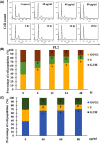
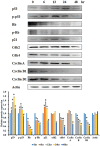
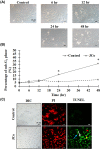
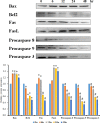
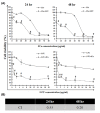
References
-
- Blot W.J., McLaughlin J.K., Winn D.M. et al. . (1988) Smoking and drinking in relation to oral and pharyngeal cancer. Cancer Res. 48, 3282–3287 - PubMed
-
- Mashberg A., Boffetta P., Winkelman R. et al. . (1993) Tobacco smoking, alcohol drinking, and cancer of the oral cavity and oropharynx among U.S. veterans. Cancer 72, 1369–1375 - PubMed
Publication types
MeSH terms
Substances
LinkOut - more resources
Full Text Sources
Medical
Research Materials
Miscellaneous

